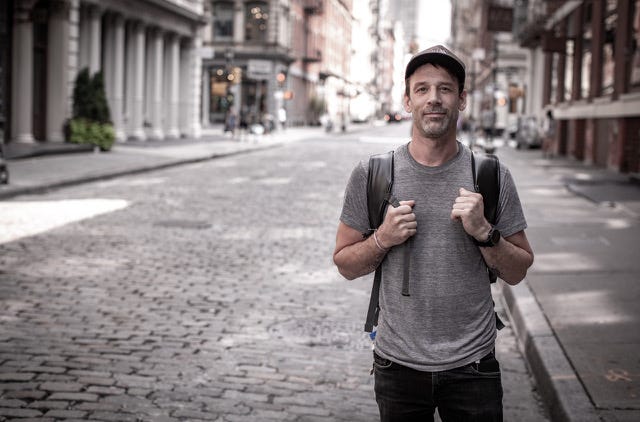The Cardboard Effect: Acclaimed Musicians Are Obsessed with Instruments Made Entirely Out of Paper
Co-creator Dave Lee on the pandemic 'Aha!' moment that led to a magical intersection of engineering and soul, freeing acclaimed artists to simply play.
The greatest hits of rock and roll are often born from moments of raw, unpolished inspiration. And that is the engine driving Cardboard Sessions, the unique engineering-meets-art series co-created by Dave Lee that’s capturing the imaginations—and surprise—of music’s biggest stars.
The premise is brilliant: artists like J Mascis, LP, and Dogstar perform entirely unrehearsed using fully functional musical instruments (guitars, keyboards, drums) constructed only from cardboard. The results, as the musicians will tell you, are unexpected. LP confessed, “It plays shockingly well… I’m obsessed.” And for good reason: the series is designed to remove expectation and let pure creativity run wild.
For co-creator Dave Lee, the idea was born from a desire for human connection during the pandemic. “I was so starved for live music and human energy that I thought, once this sh*t is over, I’m pulling those instruments out and asking some friends to play them,” Lee shares. He saw the cardboard instruments as a metaphor for stripping away perfection. “When an artist sits down with one, it changes the energy, they approach it with curiosity instead of control,” Lee says. “That space between uncertainty and discovery is where the magic happens.”
“Billy Gibbons absolutely blew us away. He walked in ready to go, no warm up, no hesitation, laid down a brand-new riff and built a song right there in front of us. Total masterclass. The riff is all-time. Matt Sorum was on drums, and it took the whole thing to another level. I still can’t fully believe that happened. Reignwolf and Brad Wilk also brought that same fire, what you’re seeing there is one take, pure instinct, zero f**k’s given.” - Dave Lee
While the finished instruments—including a jazz-style archtop guitar (Benedetto inspired)—are masterpieces of engineering, Dave says the biggest challenge was fighting the perception that cardboard can’t handle the job. “The drum kit was definitely one of the toughest builds,” he notes, Mike Martinez from Ernest and Sahir from Masters of Maple pulled off something incredible. Citing the difficulty of getting hardware and tension to hold on paper shells.
But the real magic is the psychological freedom it grants the musicians. “When you hand a well-known artist a cardboard instrument, it instantly levels the playing field,” Lee explains. “All the usual expectations, gear, tone, control, go out the window. It takes them back to that early feeling of just making noise and seeing what happens.”
“I’m Gen X, I grew up when music was branching in every direction. Punk, hip hop, grunge metal, electronic, folk, it all hit at once. I’ve never cared about genre; I care about intent. We look for artists who are curious, who still want to explore. The ones who aren’t afraid to mess around, make mistakes, and find something real. If someone’s too worried about the setup or the polish, it’s probably not their thing. But if they show up ready to play and see where it goes, that’s who we want in the room.” - Dave Lee
This focus on raw authenticity also resulted in a priceless piece of history: one of the final recordings from the legendary Terry Reid. For the Cardboard Sessions team, it reinforced their role in musical documentation. “It reminded us that Cardboard Sessions isn’t just about the experiment; it’s about capturing real moments,” says Lee.
Thinking about the future, we asked Lee who are a few dream acts—or acts he had in mind. “Tom Waits, Jack White, St. Vincent, people who live in the rough edges. I’d love to see Bon Iver or Phoebe Bridgers take on the emotional side of these instruments” Lee stated. “Questlove would be tight, he gets the history and the feel behind rhythm better than most. Really, it’s anyone who can see past the material and just lean into the moment.”
“We’re surrounded by perfection right now, everything edited, filtered, rehearsed. It’s exhausting. People are craving something real again. When you strip away all the production, you get to the heart of it, people making things for the love of it. That’s the energy we all need more of.” - Dave Lee
The ultimate goal, Lee states, is simple: “Creativity is infinite when you remove ego and expectation.” And with this simple idea, Cardboard Sessions is proving that sometimes, the best music is made when you build something beautiful out of nothing.
Looking ahead, Lee isn’t just focused on more sessions; he envisions Cardboard Sessions becoming an essential stop on the modern touring circuit. “Wow, five years out, that’s wild to think about. I’d love to see Cardboard Sessions become a go-to stop for artists, like some of the other great live sessions out there,” Lee notes. The team is already mapping out expansion, eyeing musical hubs like Nashville to see how different cities and local musicians react to the unconventional challenge.
Beyond the screen, Lee believes the instruments themselves have a future. “I think a few of the instruments should make it to production, even if it’s limited and collectible,” he says, pointing to the cardboard drum kit, which studios often sample for its unique sound.
Ultimately, Lee hopes the legacy of this joyous experiment is a simple, yet profound, one: “That creativity doesn’t need permission.”
“You can build something amazing out of nothing if you’re willing to try,” Lee concludes. “I hope Cardboard Sessions reminds people that music and art are about connection, not perfection. If years from now people still talk about it as a place where artists showed up, took risks, and created something real, that’s the legacy I’d be proud of.”
(Dave Lee sends special thanks to Tim Wilson and Mike Martinez at Ernest, and Marc Wierenga and the film crew.)



